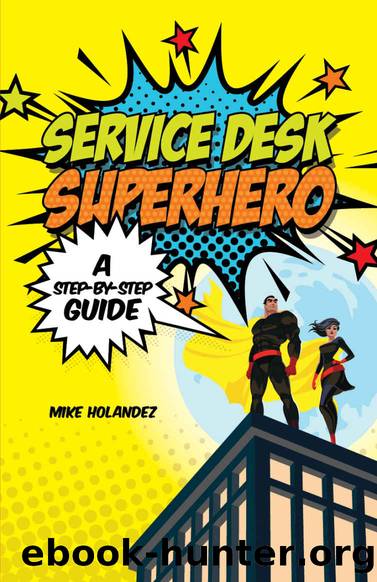Service Desk Superhero: A Step-By-Step Guide by Holandez Mike

Author:Holandez, Mike
Language: eng
Format: epub
Published: 2019-03-09T00:00:00+00:00
Lessen the chances of getting service requests due to users experiencing "slowness" or incompatibility errors with newer software or hardware peripherals by retiring older equipment and replacing them with newer models.
Determine end-of-life assets
When should older hardware assets be decommissioned and replaced with newer models? The answer is "it depends". The end of life of an asset depends on your company's risk tolerance and whether your business still views the asset as a usable resource. For big corporations, a desktop or laptop will usually be usable for 2-3 years before the fixed asset valueâas determined by the company's accountantsâhave depreciated to zero. These organizations have a strict replacement procedure that abides by the asset management lifecycle policies. For smaller businesses with a limited technology budget, this could be stretched to as much as five years or more as long as the equipment still runs, squeezing every last ounce of use from these aging systems. Clearly smaller companies with limited budgets need to focus their resources towards growing the business. Sadly, this only works up to the point when their business-critical server fails and they learn the hard way that they should've migrated their systems to a better system before the failure happened.
What do you do with older hardware? Donating the hardware to charity is a common option, and you may get a tax receipt for it too. You could also simply donate the hardware to a recycling company who specializes in eco-friendly electronics recycling. These businesses may even pick it up from your premises for free.
Before you dispose of older hardware, make sure that you perform the following tasks:
Back-up any important data from the hard drives
Microsoft-based laptops and desktop can use the Window Easy Transfer or PCmover Express, or similar software to backup files and folders to another computer, a portable hard drive, a shared folder, or to the cloud.
Recover licenses
Uninstall any licensed software from your hardware before it gets decommissioned. This is especially important for enterprise software where a license seat can be put back into the pool. Some examples of this are the Adobe Creative Suite, Microsoft Office, and utilities such as endpoint software, remote desktop tools, anti-virus apps, etc.
Wipe the drives clean
Prevent any leak of confidential information. Do not simply format drives or delete the partitions as the data is still intact and can technically still be recovered. Use specialized software such as DBAN, which can be run on bootable media such as a USB drive or CD, and irrecoverably destroy all information on a hard drive.
Inform your accounting department
Inform your accounting team that the assets have been decommissioned or disposed so that they could remove the assets from their books or write off any remaining value.
Return leased equipment
If your equipment is leased, make sure that you return any leased equipment at the end of the lease. Some of the concerns with leased equipment is keeping track of the lease end dates especially if you have multiple assets that are leased across various vendors. Another common concern involves
Download
This site does not store any files on its server. We only index and link to content provided by other sites. Please contact the content providers to delete copyright contents if any and email us, we'll remove relevant links or contents immediately.
| Business School Guides | GMAT |
| Guides | Interviewing |
| Job Hunting | Job Markets & Advice |
| Resumes | Vocational Guidance |
| Volunteer Work |
The Motivation Myth by Jeff Haden(5176)
Audition by Ryu Murakami(4892)
Adulting by Kelly Williams Brown(4536)
The Confidence Code by Katty Kay(4223)
A Mind For Numbers: How to Excel at Math and Science (Even If You Flunked Algebra) by Barbara Oakley(3262)
Waiting in the Wings by Melissa Brayden(3197)
Self-Esteem by Matthew McKay & Patrick Fanning(3116)
Fooled by Randomness: The Hidden Role of Chance in Life and in the Markets by Nassim Nicholas Taleb(3083)
The ONE Thing by Gary Keller(3036)
Nice Girls Don't Get the Corner Office by Lois P. Frankel(3024)
The Dictionary of Body Language by Joe Navarro(2972)
How to be More Interesting by Edward De Bono(2769)
Designing Your Life by Bill Burnett(2704)
Getting Things Done by David Allen(2671)
The Plant Paradox by Dr. Steven R. Gundry M.D(2583)
Police Exams Prep 2018-2019 by Kaplan Test Prep(2518)
What Color Is Your Parachute? 2015 by Richard N. Bolles(2287)
Dangerous Personalities by Joe Navarro(2262)
When to Jump by Mike Lewis(2226)
